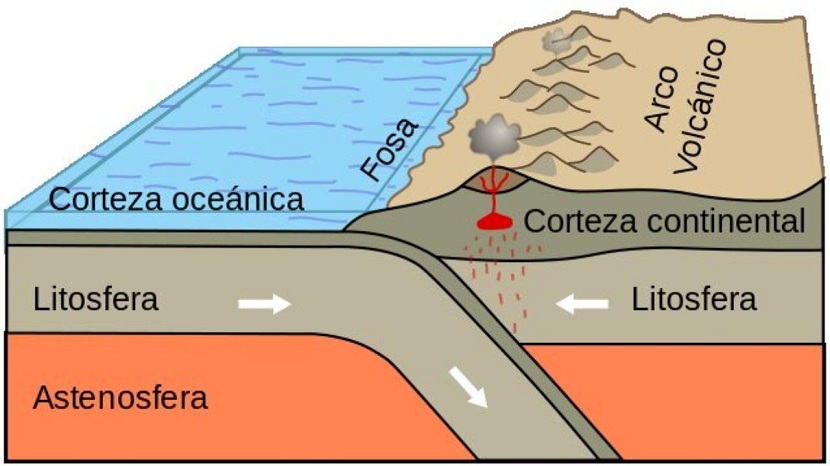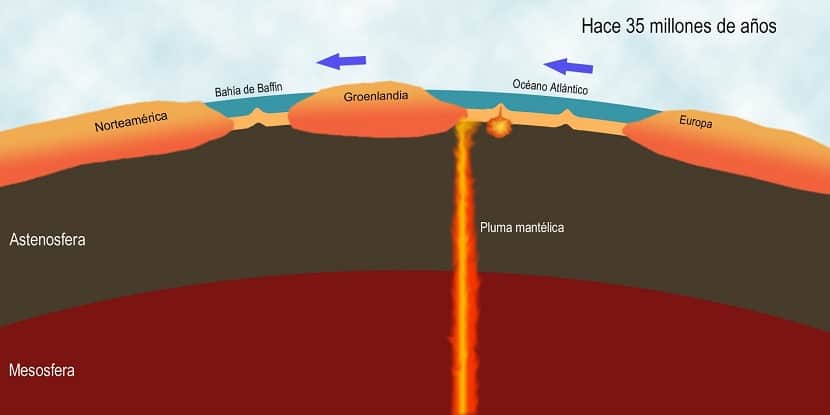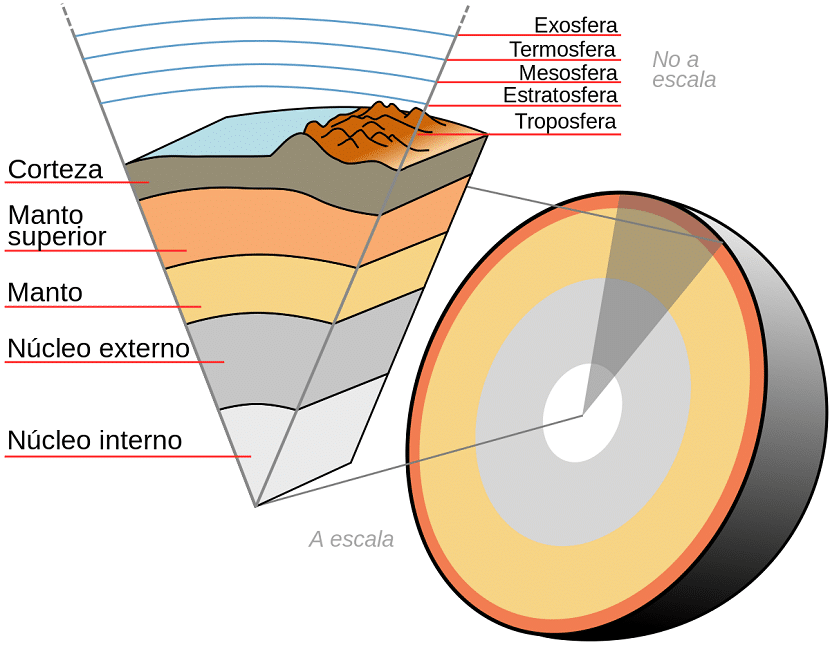
One of the layers of the Earth found below the lithosphere is the asthenosphere. It is a layer composed mainly of solid rock that is subjected to so much pressure and heat that it can behave in a plastic way and flow. It is called a moldable layer because of its texture and composition. This layer has numerous practical applications in the knowledge of our planet and in the field of geology.
In this article we are going to tell you everything you need to know about the asthenosphere.
Key features

Rocks that are so situated in the asthenosphere have a lower density than those found in the Earth crust. This makes the tectonic plates of the lithosphere move on the surface of the earth as if they were floating. They do this movement through the climbing rocks and they do it very slowly.
One way to call the asthenosphere is the upper mantle. We remember that the layers of the Earth are divided into 3: crust, mantle and core. Those areas of the entire planet where we can find the asthenosphere closer to the surface of the earth is below the oceans. This is where there are some areas where there is very little thickness of the lithosphere. Thanks to these areas, the composition and structure of the asthenosphere can be investigated in depth.
The overall thickness of this layer of the Earth ranges from 62 to 217 miles. Its temperature cannot be measured directly but can be known through indirect investigations. It is believed that it can range between 300 and 500 degrees Celsius. Due to this intense heat it becomes a completely ductile layer. That is, it has a texture that can be molded as if we were dealing with something similar to putty.
As we mentioned before, the rocks have a lower density and are partially molten. This is due to the mixing of the high temperatures together with the great pressure they are enduring.
Convection currents in the asthenosphere

Surely you have heard of the convection currents of the Earth's mantle. These convection currents will be thanks to the fact that heat from one place is transferred to another through the movement of a fluid such as molten rock. The heat transfer function of convection currents are those that drive the earth's ocean currents, atmospheric climate, and geology.
Thanks to this movement of internal temperatures and molten rocks, tectonic plates can move. This is the main reason why the continents are not fixed in one place, but move each year even though they are minimally recognizable distances. In just about 10.000 years the continents have moved only one kilometer. However, if we analyze this on a scale of geological time We can affirm that, in the future millions of years from now, it is possible that the tectonic plates will re-form what one day was known as the super continent called Pangea.
Convection is different from conduction since the latter is a transfer of heat between substances that are in direct contact. What causes the convection currents of the mantle are molten rocks in the depths that are circulating due to changes in temperature. These rocks are in a semi-liquid state so they can behave like other fluid. They rise from the bottom of the mantle and then become hotter and less dense due to the heat of the Earth's core.
As the rock loses heat and enters the earth's crust, it becomes relatively colder and, therefore, more dense. In this way it descends again towards the nucleus. It is believed that this constant circulation of molten rock is what contributes directly to the formation of volcanoes, earthquakes and the displacement of continents.
Speed of convection currents and importance of the asthenosphere

The speed at which the convection currents of the mantle go is usually about 20mm / year, so it can hardly be considered a noticeable value. This convection is higher in the upper mantle than the convection near the core. Just one convection cycle in the asthenosphere can take around 50 million years. For this reason, we have mentioned before the importance of analyzing all these processes through geological time. The deepest convection cycle in the mantle can take approximately 200 million years.
Regarding the importance of the asthenosphere, we can say that it influences the atmosphere through the movements of the ocean and the continental plates. At the same time, the position of the continents and ocean basins are also changing the way in which air and climate move around the planet. If it were not for these convection currents, the movement that we have mentioned as continental drift would not exist. It is responsible for the formation of mountains, the eruption of volcanoes and earthquakes.
Although these events can be considered devastating in the short term, there are numerous benefits on a geological time scale such as the formation of new plant life, the creation of new natural habitats and the stimulation of the adaptation of living beings. The various impacts that the asthenosphere has on the earth serve so that life can occur in greater diversity.
In addition, the asthenosphere is also responsible for the creation of the Earth's new crust. These areas are located on the oceanic ridges where convection causes this asthenosphere to rise to the surface. As the partially molten material sprouts, it cools, informing a new crust.
I hope that with this information you can learn more about the asthenosphere.